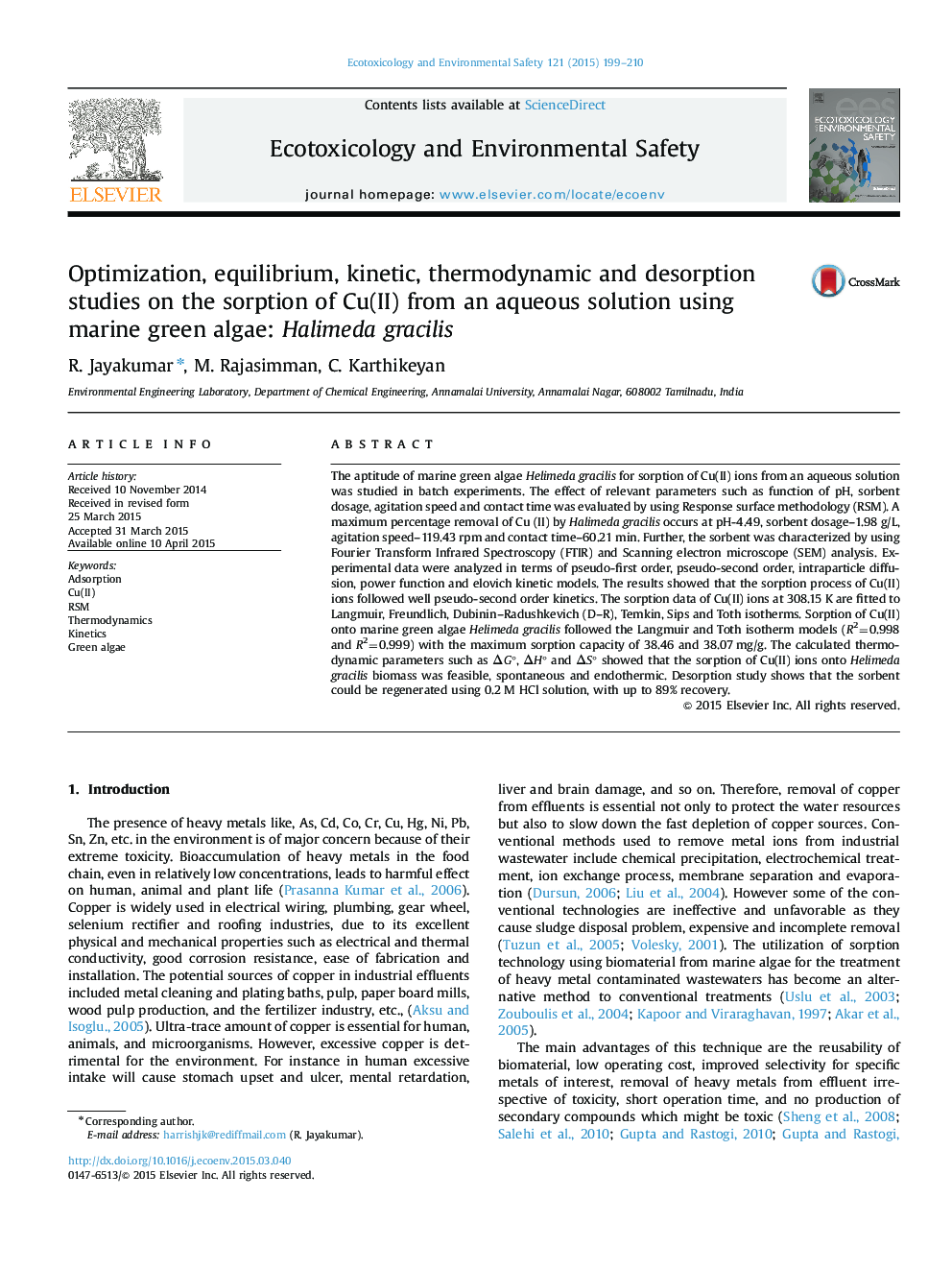| کد مقاله | کد نشریه | سال انتشار | مقاله انگلیسی | نسخه تمام متن |
|---|---|---|---|---|
| 4419314 | 1618942 | 2015 | 12 صفحه PDF | دانلود رایگان |

• Sorption of Cu(II) onto Halimeda gracilis was studied at various operating conditions.
• RSM was successfully employed to optimize the process variables.
• Equilibrium, kinetics and thermodynamic studies were carried out for the sorption process.
• Desorption studies were carried out to find the efficiency of the sorbent.
The aptitude of marine green algae Helimeda gracilis for sorption of Cu(II) ions from an aqueous solution was studied in batch experiments. The effect of relevant parameters such as function of pH, sorbent dosage, agitation speed and contact time was evaluated by using Response surface methodology (RSM). A maximum percentage removal of Cu (II) by Halimeda gracilis occurs at pH-4.49, sorbent dosage–1.98 g/L, agitation speed–119.43 rpm and contact time–60.21 min. Further, the sorbent was characterized by using Fourier Transform Infrared Spectroscopy (FTIR) and Scanning electron microscope (SEM) analysis. Experimental data were analyzed in terms of pseudo-first order, pseudo-second order, intraparticle diffusion, power function and elovich kinetic models. The results showed that the sorption process of Cu(II) ions followed well pseudo-second order kinetics. The sorption data of Cu(II) ions at 308.15 K are fitted to Langmuir, Freundlich, Dubinin–Radushkevich (D–R), Temkin, Sips and Toth isotherms. Sorption of Cu(II) onto marine green algae Helimeda gracilis followed the Langmuir and Toth isotherm models (R2=0.998 and R2=0.999) with the maximum sorption capacity of 38.46 and 38.07 mg/g. The calculated thermodynamic parameters such as ΔG°, ΔH° and ΔS° showed that the sorption of Cu(II) ions onto Helimeda gracilis biomass was feasible, spontaneous and endothermic. Desorption study shows that the sorbent could be regenerated using 0.2 M HCl solution, with up to 89% recovery.
Journal: Ecotoxicology and Environmental Safety - Volume 121, November 2015, Pages 199–210